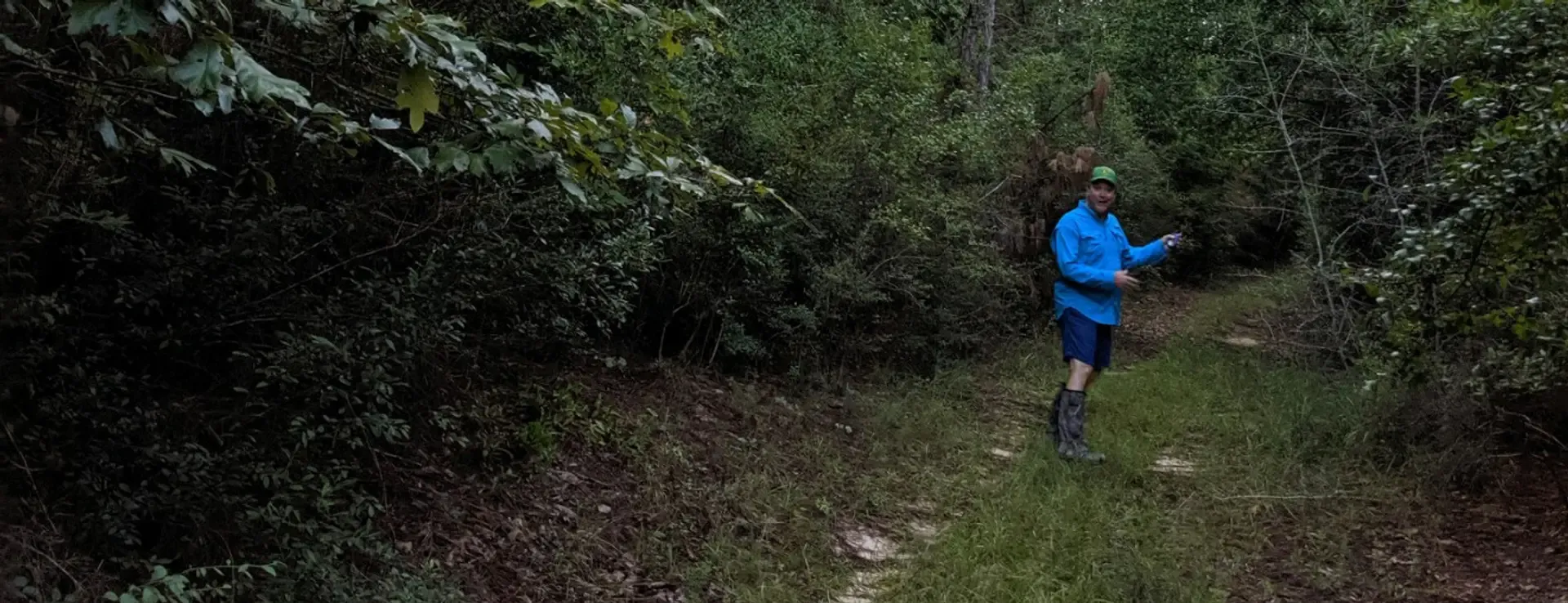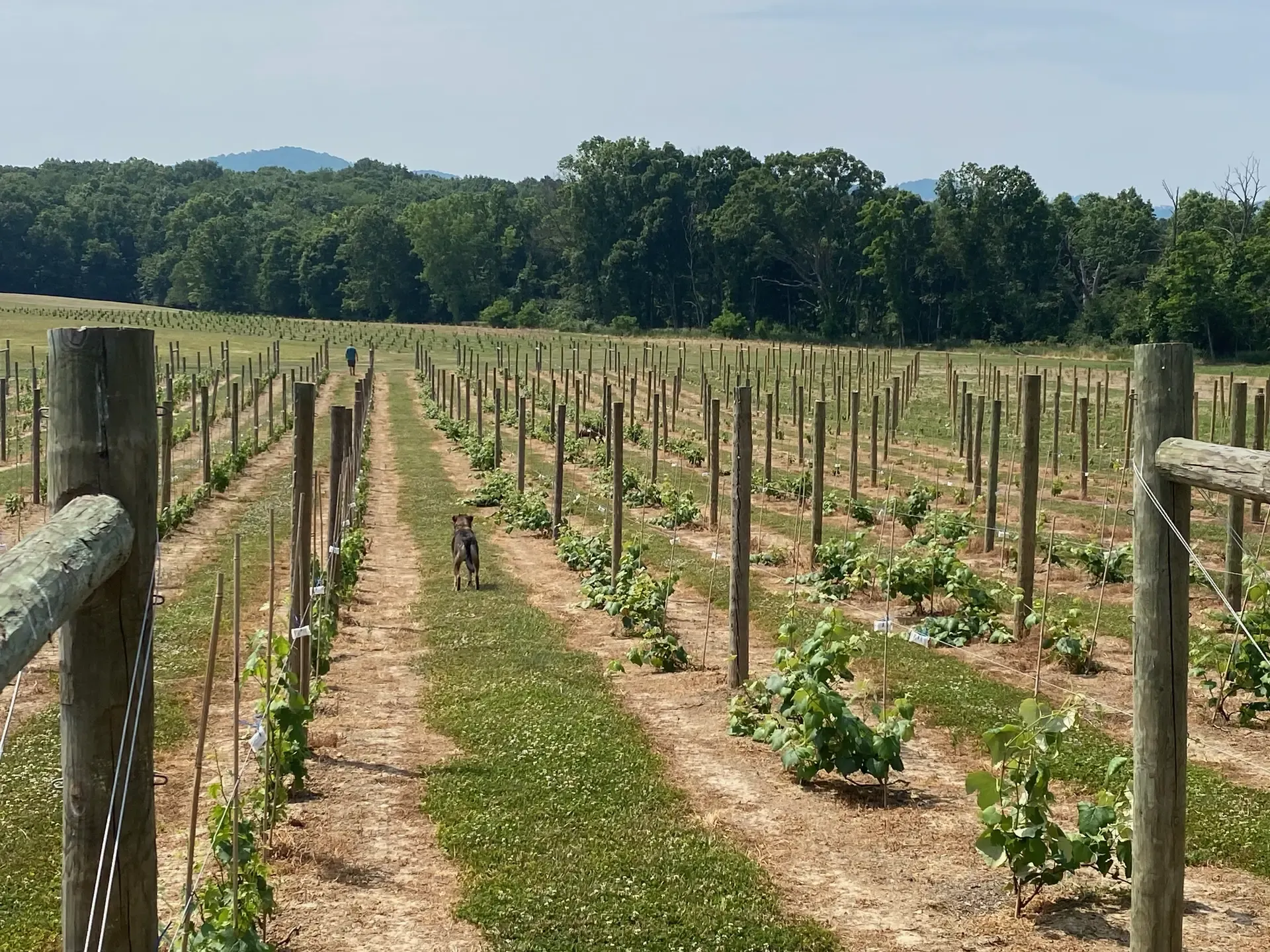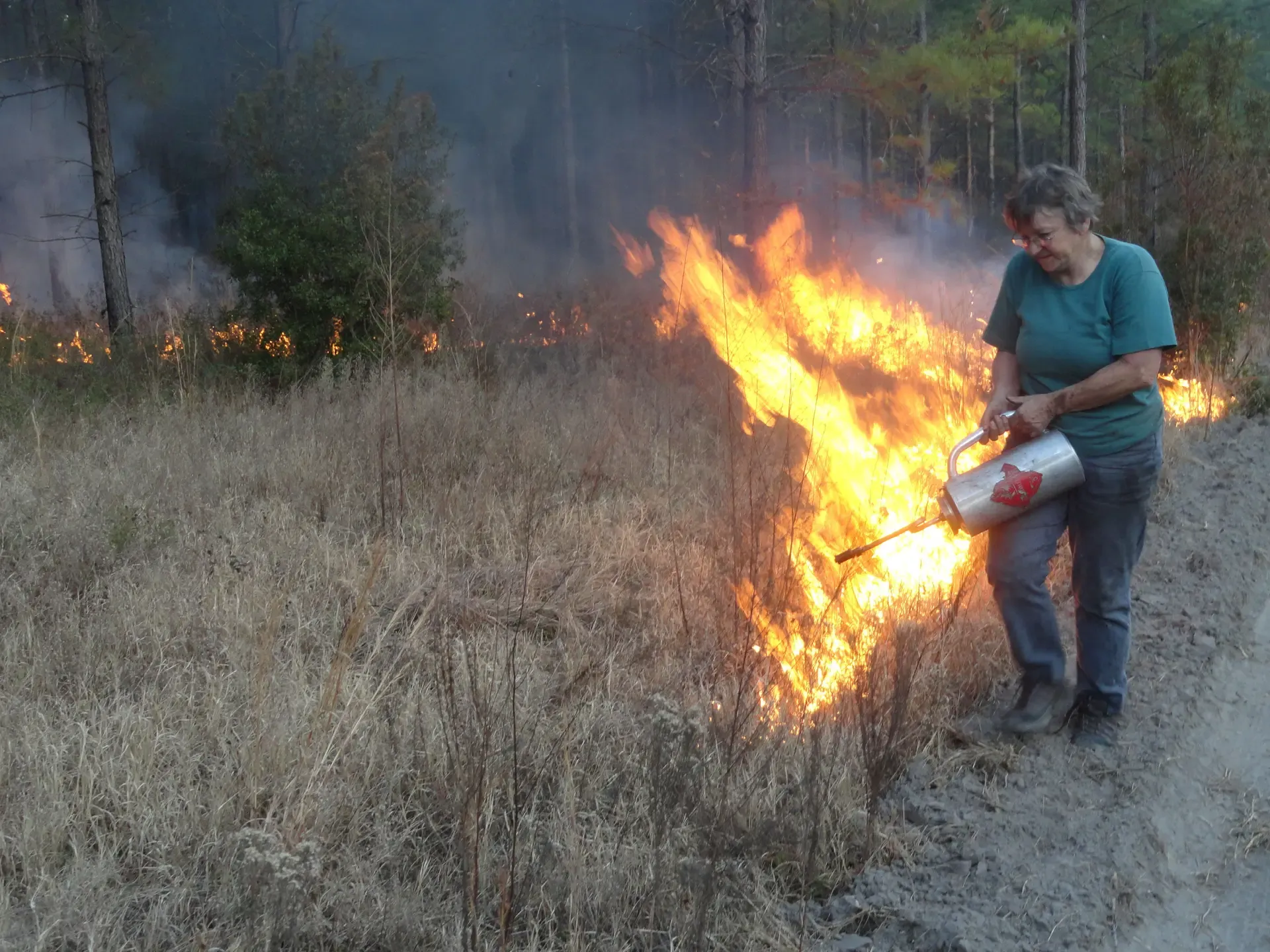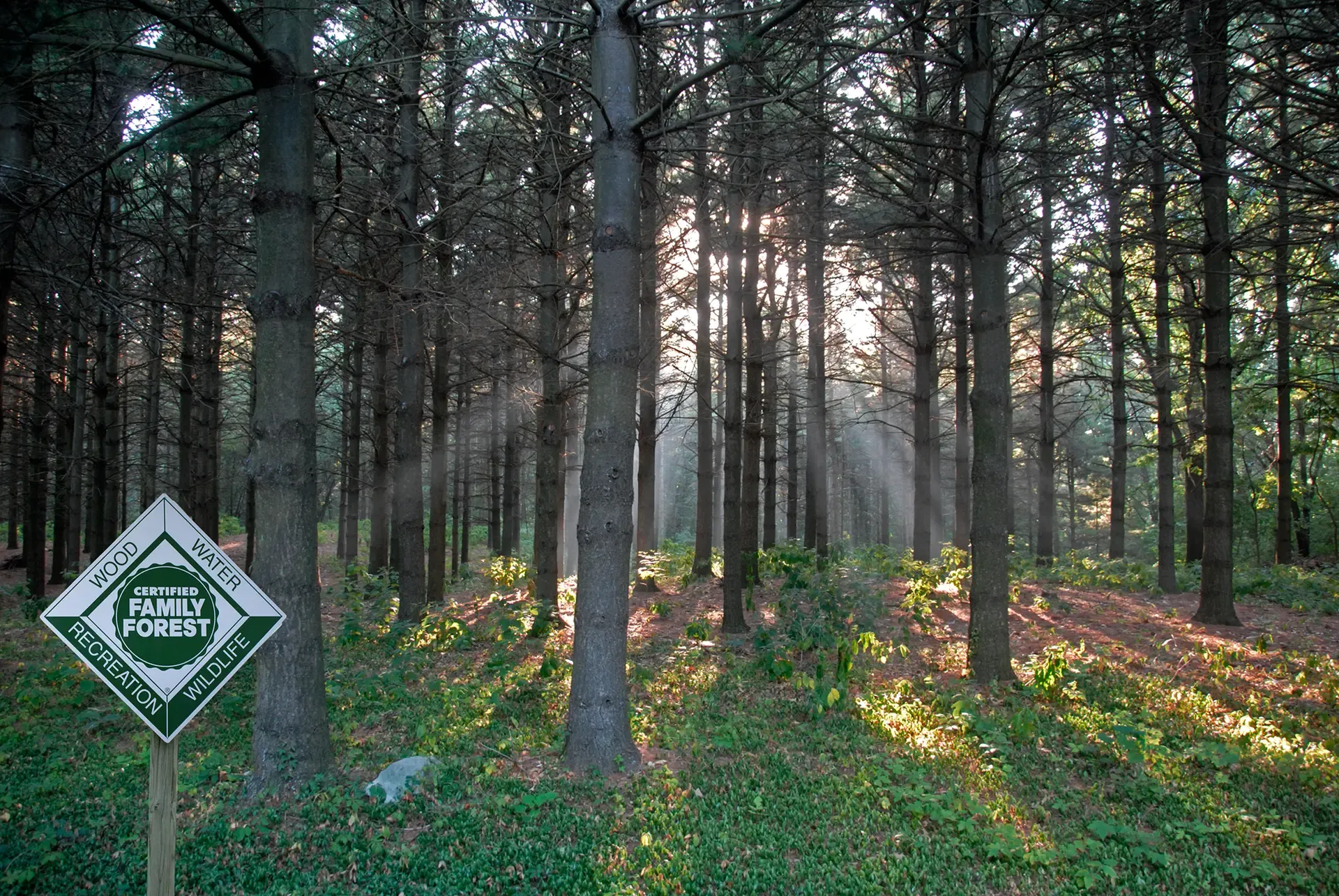How Different Landowners are Benefiting from the Landscape Management Plan

Summary:
When Jack and Jamie Dillon purchased a wooded 83-acre plot in Florida earlier this year, they spent the first several nights camped in a trailer on the property. They could hear the birds singing and smell the fresh air – they wanted to be people who owned land with a purpose, versus just owning property.
Shortly after, they went to a property appraiser’s office to inquire about the value of their trees. The appraiser told them in order to determine a value, they would need to file a forest management plan.
They had never heard of one of those before.
It affirmed that while they were eager to get started, they did not have any of the knowledge or tools needed to care for a forest. They would need help if they were going to accomplish what they truly wanted.
Across the state line in Alabama, Brinley Hocutt can trace his family’s forest ownership back to the Civil War. For Brinley and his wife Martha, their focus on keeping their 370 acres healthy, creating a home for wildlife, and bringing in income from the land to help pay for itself.
Keeping an old worn notebook of goals and activities, Brinley has done much of the work in his woods himself – conducting periodic thinnings to give space to the healthier pines, creating fire lanes, building bridges over the creeks, and learning how to do prescribed burning, a technique to help regenerate the ground cover in pine stands.
But Brinley and Martha wanted to do more. They knew of the American Tree Farm System (ATFS) but had never gotten around to pursuing it. ATFS offered guidance on sustainability, and that you needed a formal written forest management plan and meet other requirements to enroll. They were worried about the time and cost it would take.
Similarly, Vincent Milstead’s land has a long history. His ancestors kept his 42 acres in Escambia, Florida in trees. He recalls stories of how they would float logs down the property's creek to the local mill. His father, upon buying out other heirs in the 1950's, decided to use the land solely for his family. He cleared out pastures, raised cattle, and grew crops.
When Vincent took over, he had many ideas, some different from his father's. He was interested in restoring the land to its original state – a healthy mix of tall majestic pines and grand hardwoods and a thriving habitat for deer and turkey. In short, he wanted a place he could share his love of nature with his family.
He had a management plan written that outlined his long-term vision, and started slowly, each year planting a few more acres of longleaf pine. As the trees grew, the wildlife sightings did as well. Vincent's children grew too, and grandchildren came along, with new little feet to run the trails and pick wildflowers.
When it came time to write his next forest management plan, he was able to reflect on all that he had accomplished over the years, and what was in store. Legacy was what kept coming to mind – the legacy he would leave for his family and the legacy he would leave for the land.

The Landscape Management Plan
The Dillions, Hocutts, and Milsteads are just a few of the 21 million family forest owners that collectively own the largest portion of the forests in the U.S.
While family forest owners own land for a variety of reasons and have different stories to tell about their ownerships, they all care about their land and want to do the right thing.
However, many also face challenges that keep them from stewardship. They struggle with knowledge and expertise on forest management, cost, and general awareness of the resources available to them. One of the most significant barriers to stewardship is not having a forest management plan.
A forest management plan is a formal plan that outlines a landowner’s goals over a long-term period, providing extensive information on tree types and soils, background on wildlife species, silviculture specifics and action the landowner should take over time. These plans are a must-have in order to conduct many forest management activities, such as apply for cost-share or become certified in the American Tree Farm System. Across the U.S., fewer than 13% of family forest owners have a written management plan.
Why is this administrative step such a barrier?
Because forest management plans can be costly and time-intensive. Given the detail needed, a plan can take days or even several weeks for a forester to write.
The American Forest Foundation, in working to reduce the barriers to management for landowners, has been working with its partners to create new tools to help forest owners get started managing faster and more easily.
One of these new tools is the landscape management plan.
A landscape management plan (LMP) is a forest management plan written for an entire region versus an individual parcel of land. Specifically, a landscape management plan looks at forest planning from the landscape level, taking into account the entire forest ecosystem and prioritizing conservation needs across a region such as wildlife habitat, species biodiversity, and the clean water supply. This helps pull together many family landowners' efforts towards a larger conservation goal that can have an even greater impact on the region. If the landscape management plan meets the goals of the landowner, it can be used to help streamline the process, and save time and money in having an individual one created.
State ATFS Committees Using Landscape Management Plan Seeing Positive Growth
The landscape management plan (LMP) was piloted in Alabama and Florida in 2017 and has proven to be a successful tool to help more forest owners become certified in ATFS more quickly.
In 2018, Florida saw a 50% increase in new certified Tree Farms above their average growth, and Alabama nearly than doubled its newly certified Tree Farms compared to its average growth. This increase was largely due to the LMP.
Part of the LMP’s success is its versatility and ability to support a variety of landowners, with different backgrounds and different goals. In addition to streamlining the process of ATFS enrollment and certification down from one to two months, to one to two weeks, allowing landowners to get started more quickly. It is also proving to be a key educational tool. Landowners like the Dillions and Hocutts, who are new to ATFS or management altogether, have found the plan provides extensive information on forestry, helping them to learn more about forest management.
Many landowners like the landscape management plan because it ties their efforts into that of the greater region. The Dillions, Hocutts, and Milsteads are all using the landscape management plan to prioritize local conservation needs such as wildlife habitat on their parcel of land. This helps pull together many family landowners’ efforts towards a larger conservation goal that can have an even greater impact on the region.
Currently, AFF, the ATFS network and several partners are currently working to expand the places the LMP is offered. More than a handful of states are expected to begin offering an LMP as a tool to aid ATFS certification in 2020.
If your ATFS committee or state agency or company is interested in tools that can help streamline and expedite ATFS certification growth contact us at info@forestfoundation.org.
Related Articles

February 20, 2024
For Conservation, Climate and Grapes
In Allegany County, you can spot newly planted grapevines. To the Trezise family, Kevin, Rene, and their son Bryce, this is the site of their future farm and vineyard.

December 19, 2023
Georgia Landowner Named the 2023 Outstanding Tree Farmer of the Year
The American Forest Foundation and the American Tree Farm System are excited to announce the 2023 National Outstanding Tree Farmer of the Year, Heather Brasell of Berrien County, Georgia.

December 14, 2023
Announcing the 2023 Regional Outstanding Tree Farmers of the Year
The American Forest Foundation and the American Tree Farm System are excited to announce the 2023 Regional Outstanding Tree Farmers of the Year.